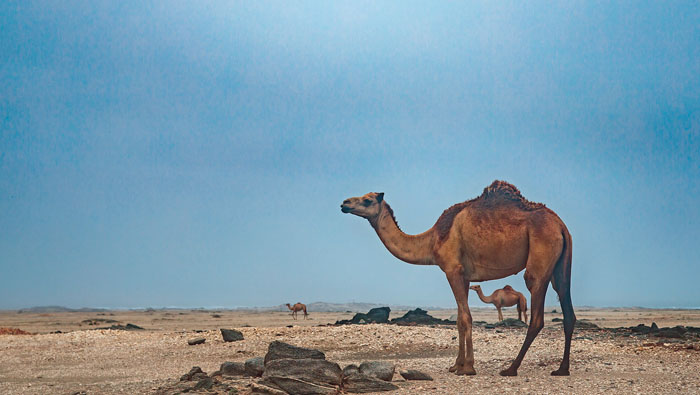
Muscat: Farmers in Dhofar say they are still counting the cost of Cyclone Mekunu, which hit the Dhofar governorate in May, 2018, and caused the deaths of thousands of prized livestock, at an estimated cost of more than OMR12 million.
The cyclone’s devastating effects spiked annual figures for dead cows, sheep and camels in the governorate. Government body Be’ah, Oman’s official environment agency, revealed to Times of Oman that, on average, 430 animals died every week for the whole of 2018, with Mekunu driving that number higher than previous years.
The agency cleared the remains of 22,890 animals for the year, which is much higher than normal, and farmers are still coming to terms with the impact.
Statistics released by Be’ah reveal a total of 22,890 animals died in 2018, including camels, cows, goats, and sheep. Be’ah’s data shows that 9,596 camels died in Dhofar at a rate of 26 per day, while the total of dead goats amounts to 7,352, followed by 5,240 cows and 702 sheep.
Dr. Mohammed Baqi, representative of Wilayat Mirbat at the Shura Council, told Times of Oman, the price of a single camel can be anything between OMR800 to OMR1,000 while the price of a cow stands around OMR500. Naveed Ahmed, GM, Muscat Livestock Company, said the average price of a sheep or goat stands around OMR35 to OMR40.
Insurers estimate that the approximate amount of losses from the deaths of camels stood at OMR9,596,000 while the losses through cattle stood at OMR2,620,000 and the losses from goat herds and sheep flocks amounted to OMR322,160 in 2018.
Farmers said that the combination of natural disasters like Mekunu and Luban contributed to such high numbers. “And the diseases also increased after the cyclones,” one added.
Baqi said: “According to my research, owners who recorded a death rate of six to seven cattle as a minimum were considered lucky, while the average was 10 to 20 heads and the worst cases were those who lost between 30 and 50 cattle at least.” He added that the animals were not insured.
“The livestock census revealed that there are approximately 3.2 million cattle in the Sultanate, at least 20 per cent of which are located in Dhofar,” Baqi added. “Farming is considered to be an important part of the lives of the rural population in Dhofar. Livestock owners and breeders in the governorate have suffered in the past months as they have been subject to several exceptional conditions that negatively affect their livestock, such as the Mekunu Cyclone, which killed many animals, and the spread of infectious diseases which are present until now.”
“The financial losses incurred by a single citizen due to the death of his cattle from diseases range from OMR6,000 to OMR25,000 at least since the minimum value of a cow is OMR500, as cows were considered to be the most affected by these diseases,” said Baqi.
Farmers in the region say it has been very difficult for them to recoup their losses. “So many animals died and the worst part is that many of the animals were not insured,” one of them said.
Be’ah’s report revealed: “Wilayat Salalah recorded the highest number of deaths with a total of 12,823 animals in 2018 followed by 4,032 deaths in total from wilayat Mirbat, Taqah, and Sadah, and another 3,026 deaths in wilayat of Rakhyoot and Dhalkut.”
The report added, “Be’ah’s call centre received a number of reports regarding the dead animals in Dhofar, as a result. The Company dealt with the dead cattle by disposing of them in Thumrait engineering landfill to preserve the overall environment of the society.
“The company faced challenges in dealing with the death of cattle as a result of climactic conditions such as the Mekunu and Luban cyclones in 2018. The number of dead animals left by Mekunu were approximately 399 tons and the number of dead animals collected after Luban were estimated at 155 tons.” Beah added
In November 2018, the Ministry of Agriculture and Fisheries confirmed that it found cases of bovine ephemeral fever and Lumpy Skin Disease in some cattle in Oman, but stressed that the situation is under control.
A spokesperson from the ministry said, “The Ministry confirms that some cases have been found where cattle were killed by Three Day Sickness (bovine ephemeral fever) and Lumpy Skin Disease.”
Local Shura council member Baqi also witnessed the spread of these diseases among the cattle in Dhofar, “The cause of death in local cattle herds have varied between viral and bacterial pathogens, some of the diseases have no treatment available. Therefore the only solution for breeders is to isolate and eliminate the animal within certain veterinary procedures.”